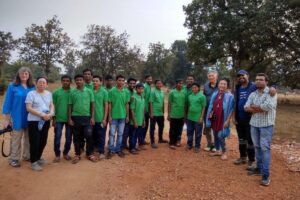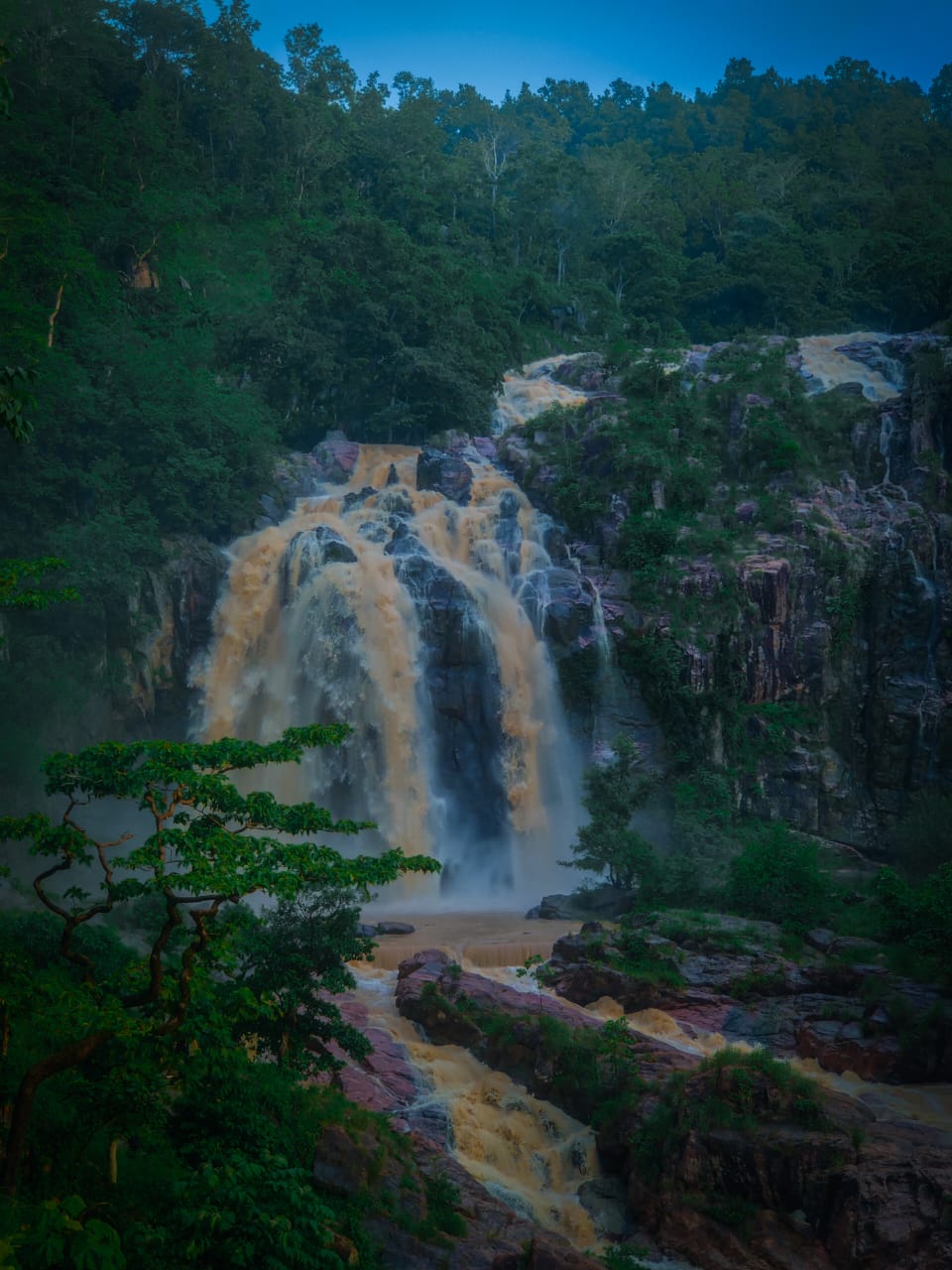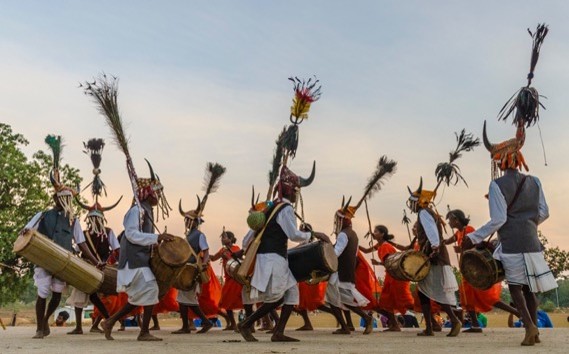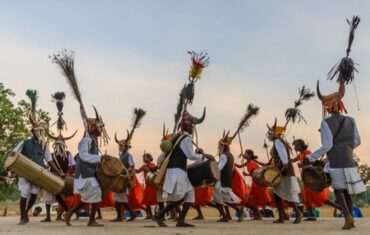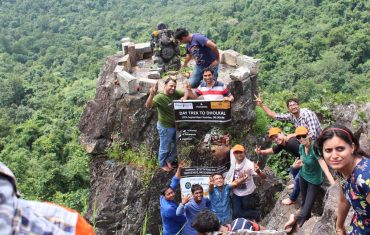Blog by Jagat Singh Parmar
Bastar is one of the districts of the Indian state of Chhattisgarh which is popular for its beautiful forests, diverse tribal culture, and magnificent history. Located approximately 300 km from state capital Raipur, this area is popularly known as the “cultural capital” of Chhattisgarh.
Bastar has always been there to attract travelers for many reasons. Since its ancient times, Bastar continues to flaunt its beauty in the ancient temples, dense forests, glorious tribal culture, natural caves, and diverse festivities. There is no exception in the history chapter too as the history of this region has been a vibrant topic for many researchers to hop on. We can just imagine the history of that story whose remnants still surprise us, like literally telling us to go back for a while and see the bigger picture- a magnificent timely passage that just disappeared with time. But not completely!

Ramayana –An unsung connection to Bastar
Legend has it that this region was famous as “Dandakaranya”, which literally means “The forest of Punishment” where deities, as well as monsters, reside together. Lord Rama took his way from UP to Bihar and then to Jharkhand to reach here in Bastar during his spiritual exile. He spent almost 10 years of his exile in the forests of Dandakaranya. You can find many stories like having those tasted berries from Shabri, and linkage to having a residence along with the Asur clan at a place called Barsoor- if folklores are to be believed. Since Lord Rama was on a journey, he made his way towards South India from a place called ‘Ramaram’.
The region was famous as Dakshina Kaushal as a whole in ancient times since it was a part of the Kaushal Kingdom in Mahabharata times. Bastar has never failed to reserve its place in history since the very beginning.

Pre-historical Era
Despite having inaccessible geography and insurgency issues, Bastar has always been heard making headlines due to its’ rich history, untold stories, and unparalleled festivity experience. It may be the territorial and preservation of culture & lifestyle that has opened the doors for travelers, researchers, and history as well as culture enthusiasts. We at Unexplored Bastar hold a subtle feeling of pride as we have always been there to preserve the cultural and ecological treasure of this place.
A significant number of cave paintings prove that there existed a settlement of humans in ancient times. These cave paintings have a lot to say about their lifestyle, their approach towards art and culture. Out of all cave paintings, “Cave Paintings of Kanker” stand out differently which is approximately 10000 years old.
The megalithic culture was practiced by many local tribes like Maria, Muria, and Gond in Bastar. Almost inching towards extinction, it is a sheer surprise to see Megaliths denoting the monumental representation of tribes in form of simple memory pillars here. The first Megalithic site of Bastar is said to be 5000 years old, and others to be around 3000 years old. Can you just imagine?
Apart from Megalithic culture, there were many other activities from the tribal community that can give us a brief idea of pre-historical settlement. India’s very first blacksmiths were none other than tribal people. Bastar region is still full of villages and hamlets whose residents can surprise you with their metalwork and terracotta art in today’s modern era as well. Dhokra, Loh ship and Terracotta pottery- one
on wax bronze, one on iron, and one with clay, all of them are well-known specialties of this area which is said to date back to more than 4000 years. The lifestyle evolved from arrows to useful tools, and then beautifying objects. This region can give you a walk through this entire journey.
Royalties of Bastar
Bastar has seen a lot of ruling dynasties shaping its identity and nurturing the changes with time. Nal, Gang, Nag(Nagvanshi), and Kakatiyas were the main dynasties closely related to the history of Bastar. The first Dravid speaking “Nags” were actually the inhabitants of Sindhughati who got separated from Prag Dravidians in 1500 BC. They just found their way towards the wilderness of Bastar. Just before Nag and Nal dynasties, you can find traces of growing Buddhism and Jainism in this region too.
Nag dynasty is very popular with their stories of contribution towards the golden chapter of this territory(700 to 1300 AD). Major archaeological constructions took place during their era, and they were responsible for the total make-over of Bastar territory. No other dynasty worked on meticulous representation of heritage – in form of exuberant temples all around.
Barsoor used to be the capital of the kingdom at that time. But due to political instability, it was later relocated to Dantewada. Bastar state was established around 1324 AD and then continued to rule as a princely state under the names of ruling kings. The kingdom was established by Anna deva after leaving Warangal who was the brother of the last Kakatiya king- Pratapa Rudra Deva. They were the descendants of the “Chalukya” dynasty. They crossed the confluence point of Godavari-Indravati, and then via Bijapur, they arrived here in Barsoor from Warangal(present-day AP). The establishment of the kingdom was under the blessing of the local goddess “Danteshwari” which is still a patron deity of the Bastar region. The idol of the goddess was brought here from Warangal, who was first established in Barsoor and later in Dantewada. Dantewada was also famous as “Tarlaghoda” at that time when these stories are taking place hand-on-hand.
Kakatiyas kept shifting their kingdom capital until they’re away from their insecurities. They started it from Barsoor which was the first capital when they just arrived in this region. Later they shifted to Dantewada, then Bhairamgarh, Chitrakote, Bade Dongargarh, and finally to Jagdalpur(which is the present-day capital of Bastar), that too around 400 years ago. Their journey from Barsoor to Jagdalpur had been very unstable as for 200-300 years they kept moving to get a capital which has good accessibility to necessary resources. They settled in Jagdalpur due to fact that the Indravati river was very close to their early settlement in the town. They found a soft corner here, and never thought to move away from Jagdalpur then.
Pravin Chandra Bhaj Deo was the last king(20th) of the Princely State Of Bastar before it was incorporated into India in 1947. He was a prominent name who supported the cause of tribal for their rights while standing against land corruption and exploitation of natural resources. Local people still worship him for the efforts he put in to bring a change.
Temples of Bastar – An Architectural Marvel
The major architectural set-up of Bastar in form of temples is inspired by the Kalinga empire. Since Bastar is very close to Odisha, most of the workers who worked on meticulous architecture were from Odisha only. So you can find a major age-old architectural resemblance between temples built under the Kalinga kingdom in Odisha and Nag kingdom in Bastar.
Barsoor Temples
Located on the banks of Indravati, Barsoor was a very prominent place of Hindu Civilization. Dating back to the 10th and 11th centuries, there were originally 126 temples in Barsoor. All the temples surprisingly hold something to cater to your curious mind.
Main attractions!
- Twin Ganesha Temple
With ruins all around, two sandstone idols of Lord Ganapati are still preserved. It’s the 3rd largest sandstone idol of Lord Ganesha in the whole world. The architectural work of this temple is mostly aimed to showcase the history of God and Goddesses.
- Battista temple

This temple is dedicated to Lord Shiva. There are two Shiva-lingams in a house with 32 symmetrical pillars. A true architectural marvel to explore in Bastar!
- Mama-Bhanja temple

As Mama & Bhanja were the builders of this Ganesha temple, it’s famous as the same name. The erect shrine and curvilinear Shikhara seem to have appealing command over the visitors.
- Chandraditya temple
This is another popular temple dedicated to Lord Shiva. Since it’s located next to the pond, the setup is a little different. Square mandapa in the front with shrine attached backside, you can find erotic carvings too in this temple.
The convoy of Bastar deities
Barsoor or Banasoor region has been more into worshipping Lord Shiva. The Nag dynasty believed in praying and worshipping the lord of the lords- Lord Shiva throughout their ruling era. Apart from their patron deity “Danteshwari temple” in Dantewada, they kept building more architectural marvels in the form of local temples.
Most of the temples in Barsoor are mainly dedicated to Lord Shiva, or his son Lord Ganesha. The tribal people of Bastar have a unique way of celebrating their local gods & goddesses. Apart from Danteshwari mata, you can find little temples of Mavli Mata, Shitla Mata, and other deities throughout the scattered forests of Bastar.
As they’re totally dependent on nature, they worship nature in the form of God and goddesses too. Since history has gifted them exuberant temples, it’s easy for them to carry forward the traditions.
What can be experienced in a better way!
Barsoor and Bastar as a whole aren’t limited to places we have talked till now. There is a lot more hidden behind the limelight. So if you’re the one who is interested in a detailed history of Bastar, archaeological sites, and architectural gems, we have got you covered. Unexplored Bastar has been there to take you to ground level and provide you with the factual history related to the place.
Unexplored Bastar is working hard on the conservation of these heritage sites for a long time now. Along with district administration and conservation architects, Unexplored Bastar is putting extra effort to keep these temples and other sites intact.
We organize guided heritage walks to different heritage sites. You can check out our various heritage walks or guided tours in Bastar- all well-curated to send you pure Bastar vibes in everything- from food to local stay. However, it’s always a good idea to opt for a heritage walk as you get to know about the history, purpose, and vision of these places along with the flair of rural tourism.
Best time to visit
Most of our tourists love to visit Bastar any time from Monsoon to Winter, i.e., from June to February. If you’re a history lover and want to hop on to the history and architectural insights, you better visit Bastar in winter. If you’re a nature lover, then you should plan a journey in the rainy season.
What Unexplored Bastar can offer!
Literally, everything if you’re in Bastar!
Unexplored Bastar has ventured into every nook of the territory to give you a well-curated out-of-the-box travel experience. You can join our archaeological tour, religious or heritage walk- cave paintings of Kanker to Danteshwari temple of Dantewada to Gadh Dhanora of Kunda village – We have spiced up everything with a proper local touch and authenticity.
Alternatively, you can join a monsoon tour too- specifically aimed to hike and enjoying at natural sites in Bastar. The clouds under your feet at the mountain highs will surely give you a hangover. Our community travel experience is something that can never go out of your head.
For more information regarding upcoming tours and events from UB, please go to our official website or social media platforms.
Follow For More Updates
Instagram- https://www.instagram.com/unexploredbastar/?utm_medium=copy_link


